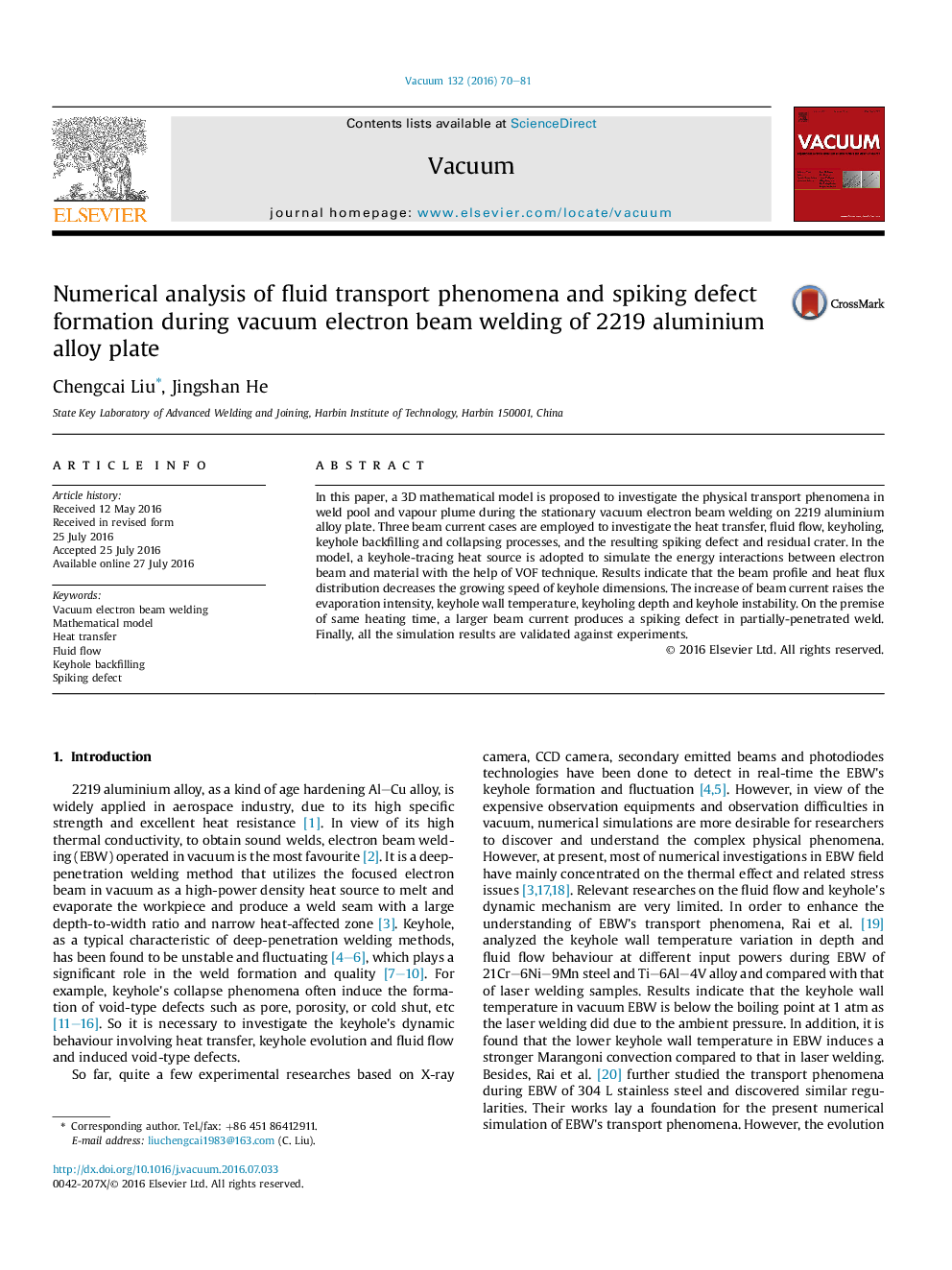| Article ID | Journal | Published Year | Pages | File Type |
|---|---|---|---|---|
| 1689538 | Vacuum | 2016 | 12 Pages |
•Heat transfer, fluid flow, keyhole dynamics and spiking formation during the 2219 Al alloy EBW process are investigated.•Effects of beam current on vapour jetting velocity, vapour pressure, keyhole temperature and keyhole depth are analysed.•Insufficient duration time and low heat flux at bottom keyhole facilitate spiking formation in partially-penetrated weld.
In this paper, a 3D mathematical model is proposed to investigate the physical transport phenomena in weld pool and vapour plume during the stationary vacuum electron beam welding on 2219 aluminium alloy plate. Three beam current cases are employed to investigate the heat transfer, fluid flow, keyholing, keyhole backfilling and collapsing processes, and the resulting spiking defect and residual crater. In the model, a keyhole-tracing heat source is adopted to simulate the energy interactions between electron beam and material with the help of VOF technique. Results indicate that the beam profile and heat flux distribution decreases the growing speed of keyhole dimensions. The increase of beam current raises the evaporation intensity, keyhole wall temperature, keyholing depth and keyhole instability. On the premise of same heating time, a larger beam current produces a spiking defect in partially-penetrated weld. Finally, all the simulation results are validated against experiments.
